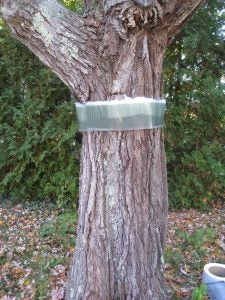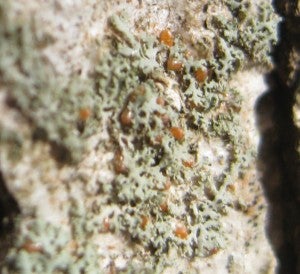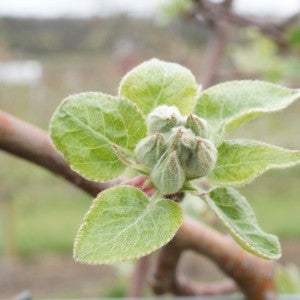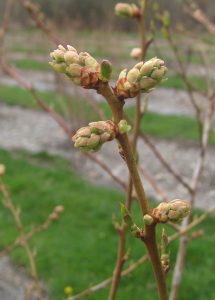Winter moth update 3.18.22
Winter moth numbers had been decreasing for several years, but last year we saw a bit of an uptick in the population! According to the DEM June 2021 aerial survey, 150 acres were defoliated by winter moth caterpillars in 2021, and I saw many caterpillars causing damage to apple trees and blueberry bushes in southern Rhode Island. I think there was an increase of winter moth caterpillars in 2021 because the weather during egg hatch last year was perfect for winter moth survival. In 2021, most of the eggs hatched over a 10-day period in early April when it was dry, and the temperature didn’t get much below 40 degrees. It was perfect weather for the caterpillars to hatch and enter developing buds.
Winter moths will be here forever, and some years will be worse than others. That’s why it’s important to scout your fruit plantings and valuable landscape trees each spring. Early May is usually the best time for scouting – but it all depends on the weather.
Over the last decade, winter moth eggs started hatching anywhere from mid-March to mid-April, depending on the weather. Last year they started hatching on March 31st. I don’t expect eggs to begin hatching until after red maples start blooming and when McIntosh apple buds crack open, exposing a little bit of green tissue (called Green Tip). Hopefully, this is still several weeks away, but extended warm weather can change things quickly.
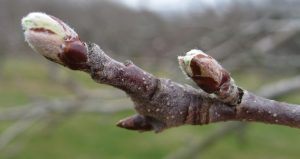
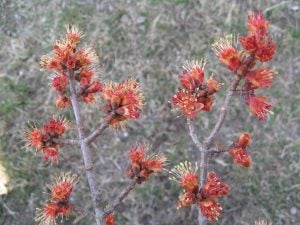
Winter moth eggs tend to hatch at McIntosh apple ‘green tip’ and when red maple blooms.
Tree wraps were set up in early November 2021, to monitor eggs at 2 locations in RI – Charlestown and Kingston. In November and December, as female winter moths climbed trees and encountered tree wraps, female moths deposited eggs below the wraps, aggregating eggs, and making it easier to monitor eggs hatching. Winter moth eggs are orange now but turn blue a couple of days before hatching. This trait makes it very handy for monitoring egg hatch! Tree wraps were removed March 7th, and both locations have plenty of eggs to monitor. There are fewer eggs to monitor than last year, but not many fewer.
Tree wrap and aggregated orange winter moth eggs found below tree wrap.
Eggs are nearly impossible to find without setting up tree wrap in the fall.
I don’t expect landscape trees to require insecticide applications against winter moth caterpillars this spring. Growers of fruit (apple, pear, and blueberry) may need to apply insecticides against winter moth caterpillars. Apples, pears, and blueberries are at risk because winter moth caterpillar enter and feed on flower buds, possibly causing a lot of damage to these crops. It doesn’t take a very large population of winter moth caterpillars to cause significant damage to flowers and therefore to the crop.
We don’t have a good threshold to indicate whether to spray apples, pears, or blueberries for winter moth caterpillars. Some Nova Scotia guides recommend spraying apple trees when 1-2 caterpillars are found in 20 buds (>5% infested buds). A good time to scout, and then spray if needed, is from tight cluster to bud separation – when the flower buds start separating from the cluster, but before blossoms open. We are many weeks away from this bud stage (I hope!). All common insecticides labeled for apples and blueberries control winter moth caterpillars well. Bt insecticides (such as Dipel) are also effective. Bt insecticides kill only caterpillars so don’t harm bees and other insects.
Apple tight cluster and apple bud separation are good times to look for caterpillars. Blueberry tight cluster is also a good time to check, but it is more difficult to check blueberry flower buds than apple flower buds.
The URI Plant Clinic has moved into the Skogley Turf Research Center, but you can still drop off or mail samples to 3 East Alumni Ave., Kingston, RI 02881. There is a$10 charge for landscapers and plant owners.
Heather Faubert
URI Cooperative Extension
 Home
Home Browse
Browse Close
Close Events
Events Maps
Maps Email
Email Brightspace
Brightspace eCampus
eCampus



